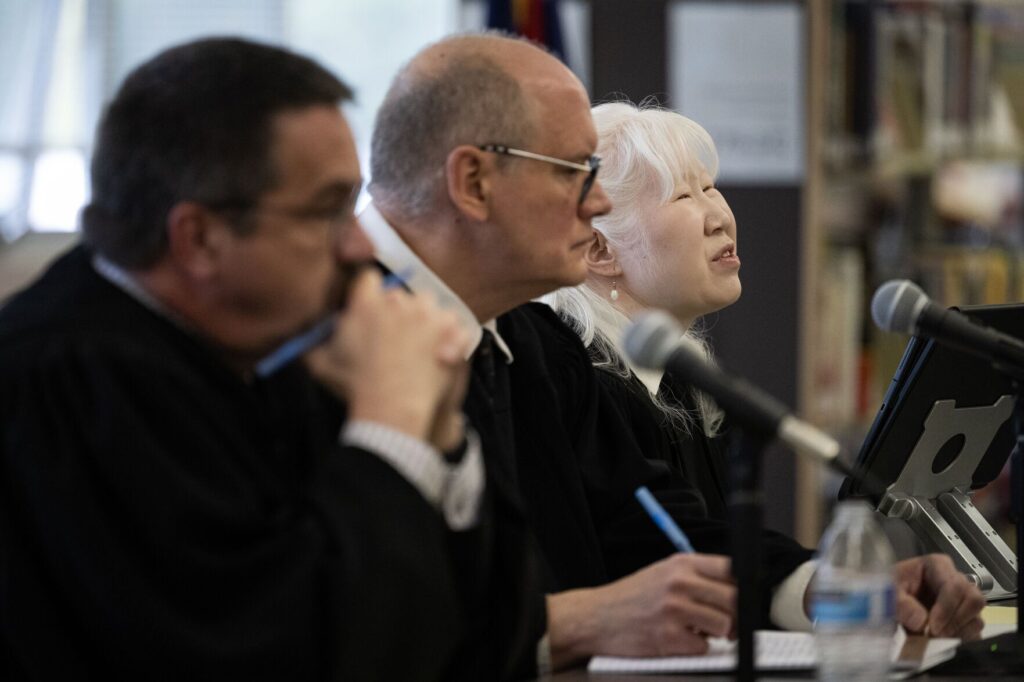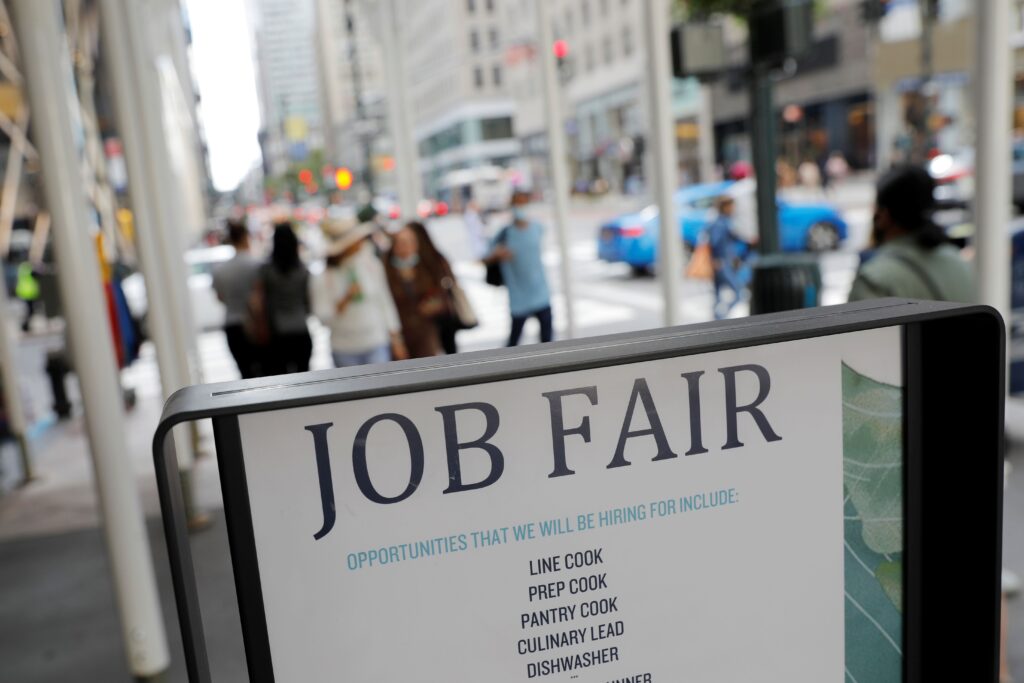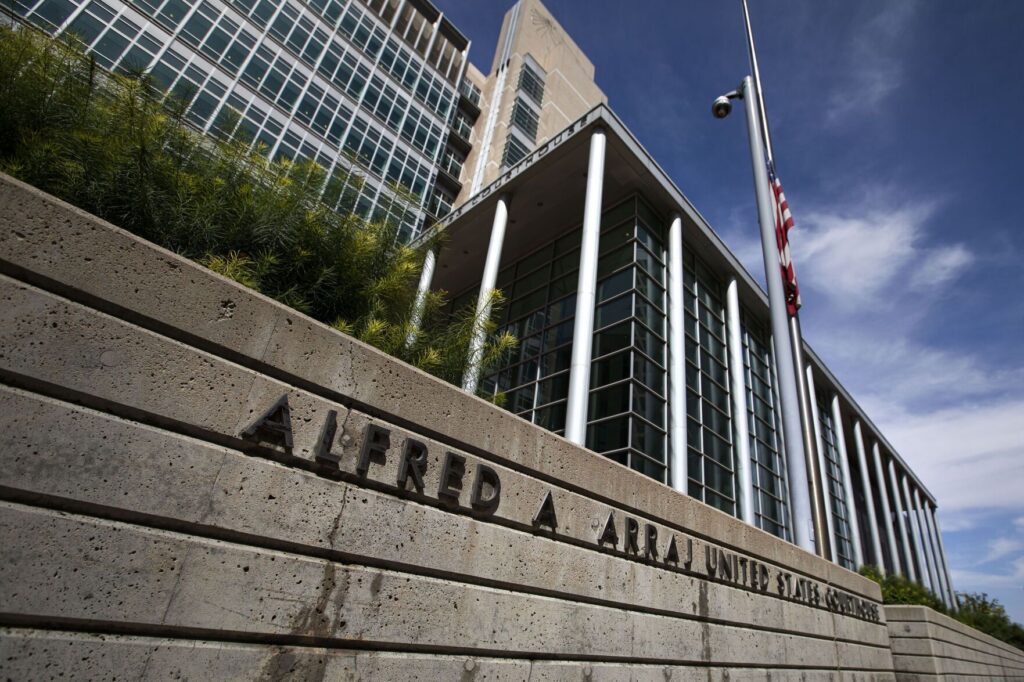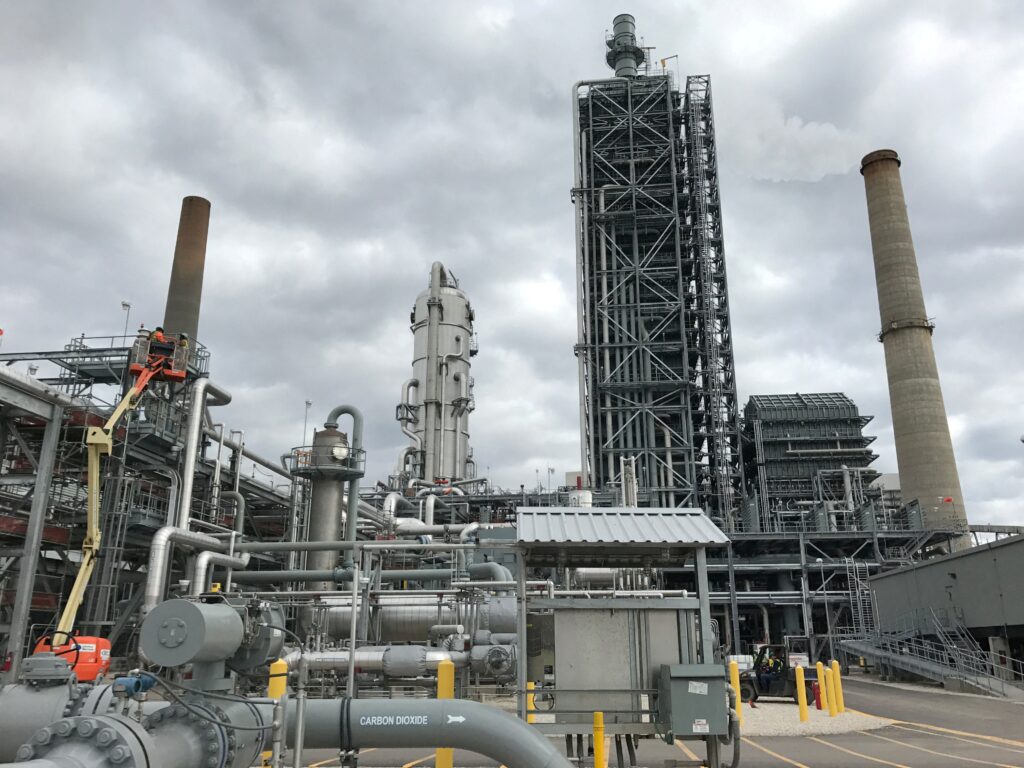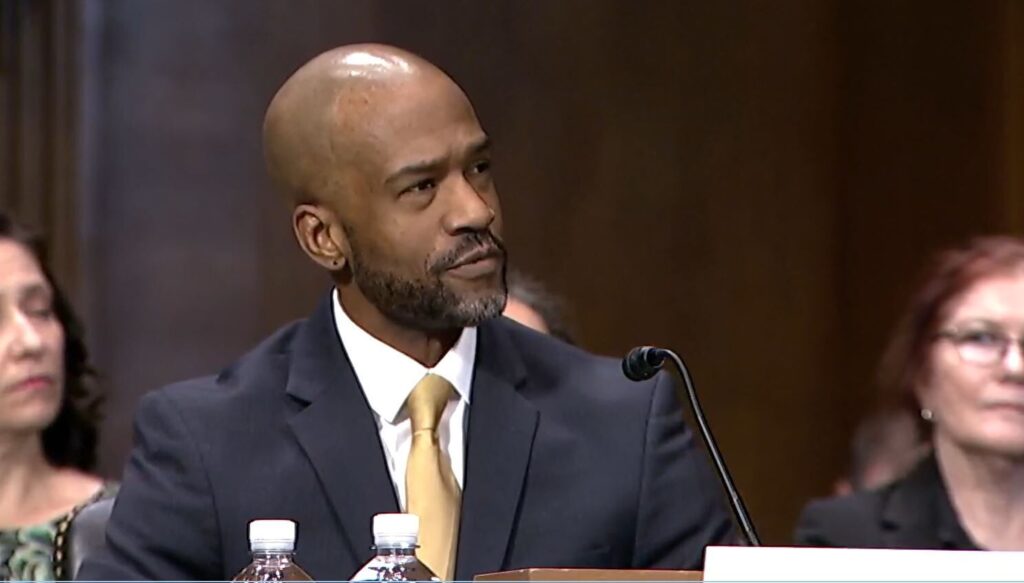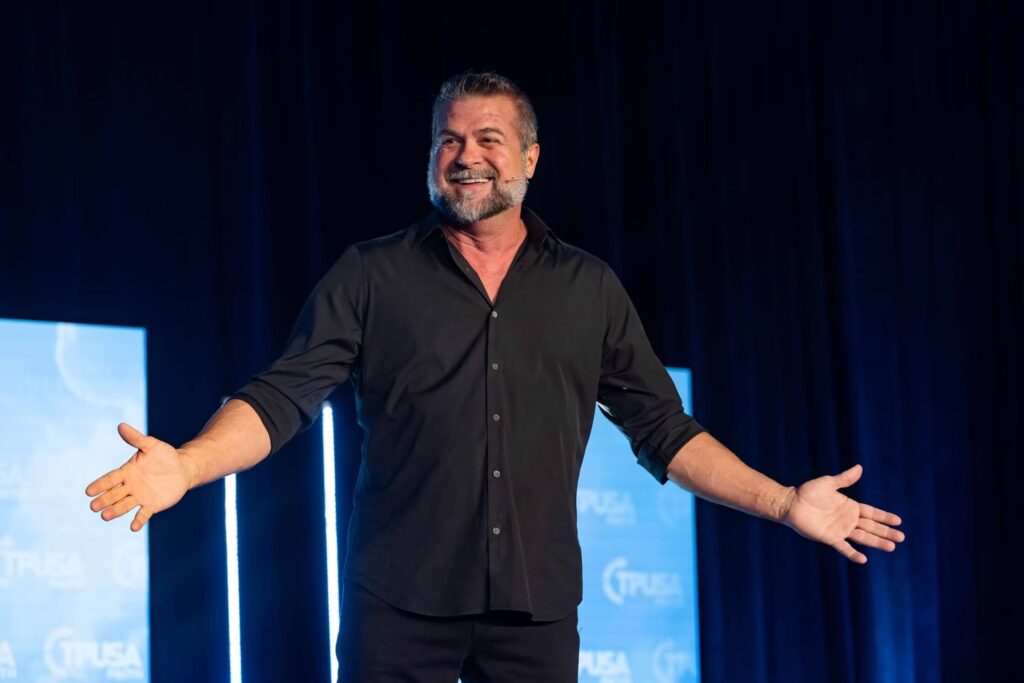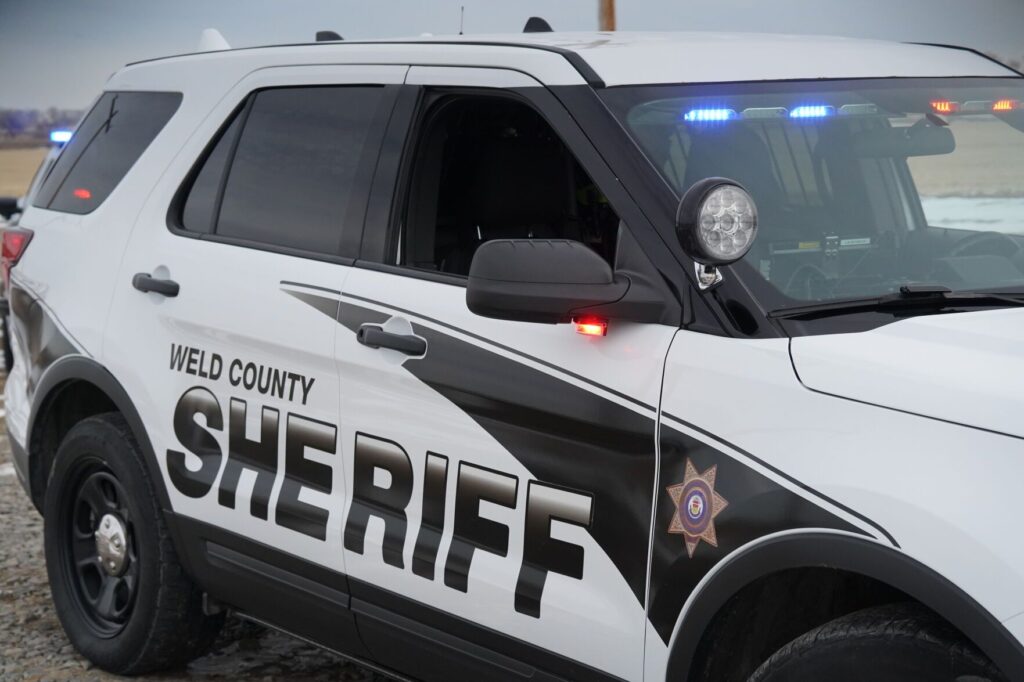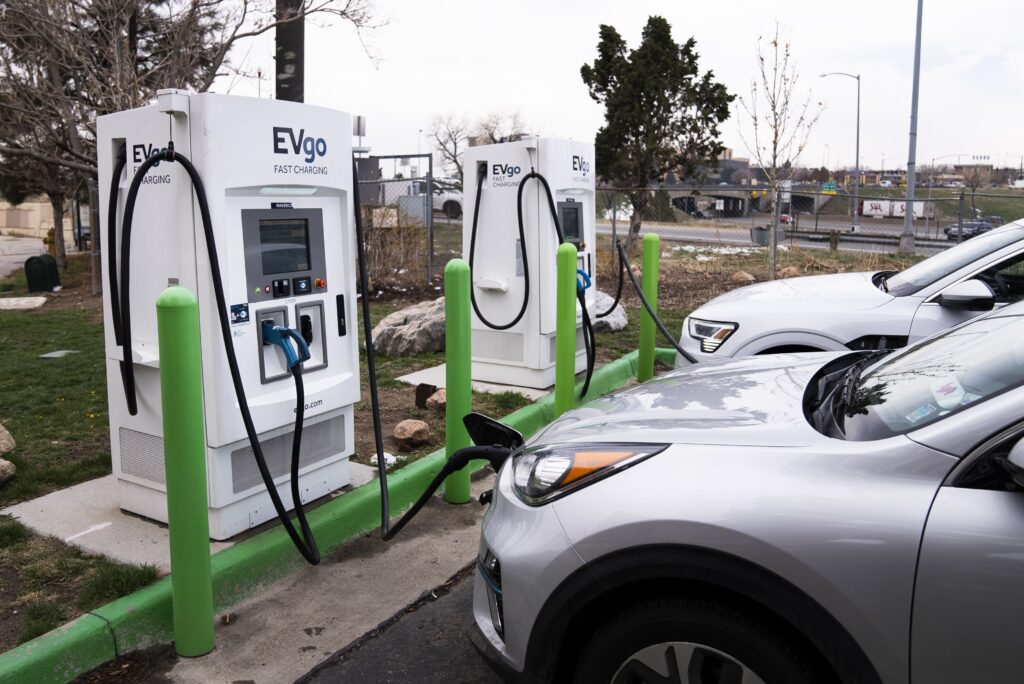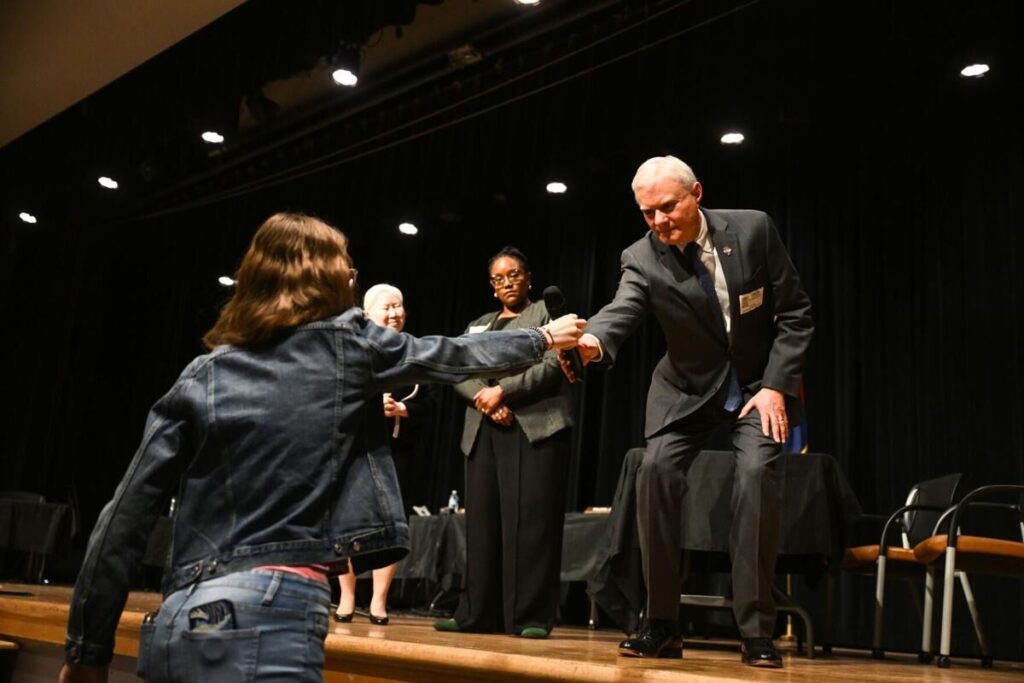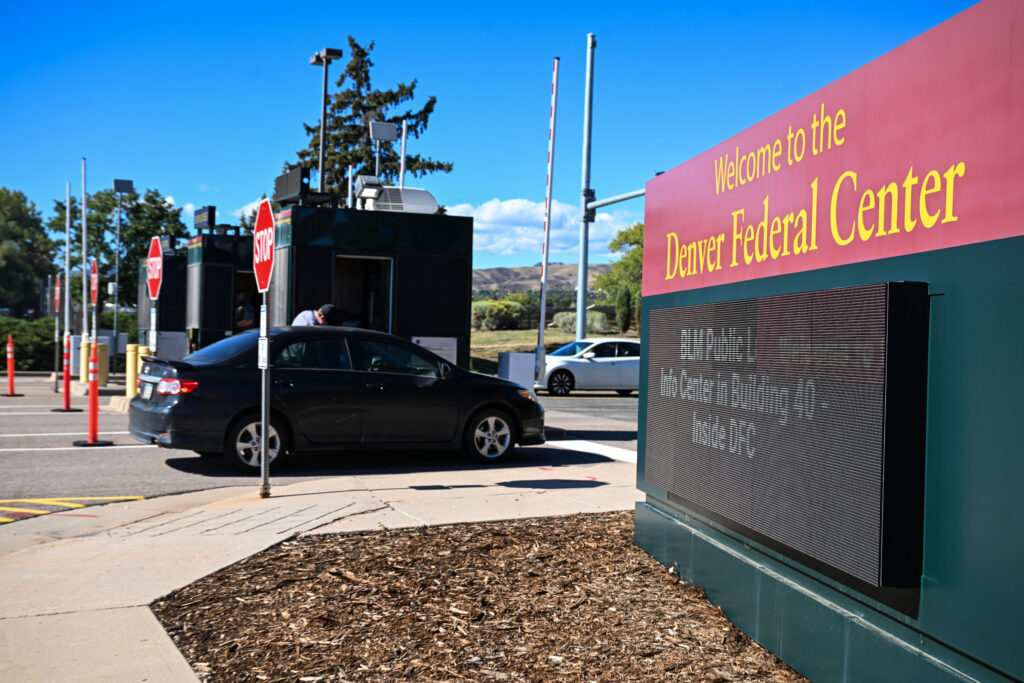Denver’s everyman mayor: Michael Hancock’s big agenda
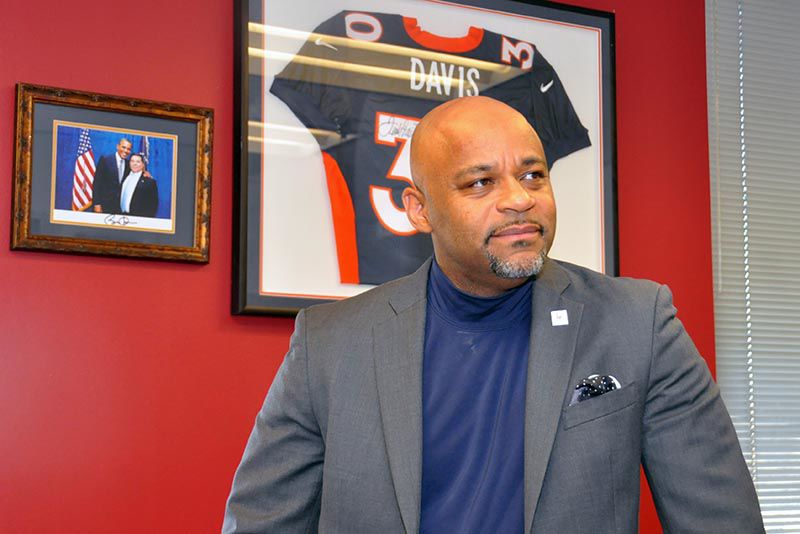
Michael Hancock is a mayor on a mission. It’s the Friday before the election, and Hancock is promoting a once-in-a-decade, $937 million bond package filled with hundreds of projects to maintain and improve Denver’s transportation, public safety and cultural infrastructure. After a stop at a Spanish-language radio station to pitch the ballot questions, he tours a 100-year-old library that’s due for some repairs if the bond measures pass, and then he ambles up Santa Fe Drive for the monthly Art Walk.
It’s a warm afternoon, but it’s early, and the usual First Friday throngs have yet to arrive, so the mayor visits a shop that sells electric bikes and then leads a loose entourage across the street for a pit-stop at El Noa Noa for some Mexican food and an update on the bond campaign. It looks good, a top strategist tells Hancock, who nods between bites. A few hours earlier, the mayor led the long-anticipated, ceremonial groundbreaking on the new National Western Center, a massive project that will reshape a big chunk of the city north of downtown, its funding OK’d by voters two years ago to the day.
“We’re right on target,” says Hancock, 48, who was elected to a second term without serious opposition in 2015. “We knew the first couple years would be – people would go, ‘What’s happening?’ But the whole time, I’m signing purchase orders for properties, condemnation letters, trying to get it all together. Today was the first time you could actually see progress. I think it’s going to accelerate a lot faster than we’ve imagined.”
“We were just reminiscing,” he adds. “When I came into office, the National Western Stock Show was moving to Aurora – they were on their way. It feels good, they’re going to be in Denver for 100 years, at least.”
After a little more than six years in office – putting the Democrat’s administration a few months past its half-way point, if Hancock runs again in 2019, which sounds likely, and winds up serving three full terms – the outlines of the mayor’s legacy are filling in, the sketches coming to life.
The massive bond package before voters is part of that, but with just days to go until the election, Hancock is relaxed, confident. He’s got this.
The conversation at the Mexican restaurant meanders. Hancock, who has a driver but rarely travels with the kind of imposing retinue that often accompanies powerful officials, tells the table how he came to love tamales. He was friends with a neighbor kid who loved to crunch on dry spaghetti, of all things, and would trade his mother’s homemade tamales for pasta Hancock slipped out of his kitchen.
“My mama was like, ‘What happened to all the spaghetti?’ Because I gave away all the spaghetti, because once I tasted those tamales, I was done.”
Hancock is the youngest of 10 siblings who were raised by a single mother, and the family was sometimes hungry, sometimes homeless. His brother Robert died of AIDS in California in the mid-1990s – Hancock promised him he’d work to empower the powerless and give voice to those who struggled to be heard – and Hancock was elected to the first of two terms on Denver City Council in 2003, the year after his sister Karen was killed by an estranged boyfriend, which he’s said has fueled his drive to protect victims and end family violence.
On the way out of the restaurant, a woman stops Hancock to take a smiling selfie with him, and another claps him on the back before trading stories. It isn’t unusual to see Hancock out to dinner, at a festival, enjoying Denver.
He’s due to participate in a public discussion about race and social justice with author Claudia Rankine, whose book “Citizen: An American Lyric” is the focus of this year’s Denver Talks series.
‘Painful, regretful space’
These are paradoxical times for Denver’s 45th mayor. Voters are about to approve the nearly billion-dollar bond package by overwhelming margins, while many of the city’s most vexing problems are the kind most big-city mayors only dream of, fueled by Denver’s booming economy – by some measures, the hottest in the country. But beyond the prosperous, rapidly growing city – including the increasing pressures on housing and transportation that accompany that growth – lies a nation in distress, Hancock says, more divided than it’s been in memory.
Hancock shakes his head and smiles.
“Americans make a sport out of watching a president age during his term, right? Trump is aging America. Think about it. This guy feels like he’s been in office three years. It’s only been nine months. He’s aging America. It’s like, ‘He’s not gone yet?’ It’s amazing.”
It’s about the only light-hearted thing Hancock has to say about Trump. Turning serious, he says, “It’s probably the most painful, regretful space I’ve ever seen this country in.” Then he recounts a recent visit he and his wife, Mary Louise Lee, made to the Smithsonian’s year-old National Museum of African American History and Culture in Washington, D.C.
The museum’s central exhibit tells the story of slavery to freedom, starting in the 15th century with the transatlantic slave trade to the present day, Hancock says.
“The first thing you see is slaves, and the last thing you see is Barack Obama. You have to work your way up to the Barack and Michelle Obama exhibit. As we walked out, my wife just started crying. I asked, ‘What’s wrong?’ She said, ‘I just feel like we’ve gone so far back in this country,'” Hancock says, turning grim.
“You get angry that so many people put their lives on the line and died to move this country forward, only to have this president – through his divisive actions, divisive words – divide us. It’s the most irresponsible leadership I’ve ever seen. Every moment, every opportunity he’s been given to lead, he fails to lead. It’s a very painful and regretful moment.”
Earlier, Hancock said the relationship between Denver and Washington, D.C., has changed dramatically since President Donald Trump took over nine months ago – a marked shift from the Obama years, when Hancock says he felt welcome at the White House and treated the federal government as a partner, not an adversary.
“The whole engagement is different. When I go to Washington now, there’s just a whole different feel. Trump hasn’t even come close to filling out his cabinet or appointees – everything’s at a standstill. As cities, you try to deal with it as best you can, because we’ve got to keep moving,” Hancock said, adding that he hasn’t met the president and doesn’t want to. “I don’t know why I would, and it would be very difficult with the language and actions of this president toward people in this nation.”
One of the flash-points with the administration has been over immigration. A week after Trump’s inauguration, Hancock greeted an early executive order threatening to pull federal funding from so-called sanctuary cities by embracing the loosely defined term. “I will not be bullied by Washington because they have failed to act,” Hancock said in a video posted online, adding that he was resolved that Denver will remain “welcoming, open and inclusive for everyone.”
Last week, Denver budgeted $200,000 for a legal defense fund to help immigrants – legal and illegal – fight deportation hearings and other proceedings.
New leaders stepping up
Hancock says the Trump era has yielded good and bad results so far.
“I think because of Trump, we are seeing the things we’ve seen in Charlottesville,” Hancock says, shaking his head at the thought of neo-Nazis and white supremacists rallying to protest the removal of a Confederate statute. “He has empowered the side of this society that had gone into hiding, because it was no longer acceptable. The hatred, the language, the actions. That side of society, he is empowering them to come out and to be bold and blatantly say the things they are saying.
“On the good side, we’re seeing a generation of leadership step up. I have friends who are members of a board of education in Texas, say, and they call up and say, ‘I’m running for Congress,’ or ‘I’m running for mayor.’ I think we’re going to look back on this era as Trump fades away, and one of the legacies that will be left is how people said, ‘I’m stepping up, I’m leaning in.'”
As for Hancock’s political future, he says he’s got his eye on the next few years in Denver.
“I don’t know where we go from here,” he says. “We’ve got another term we can do. We are seriously looking at that term, preparing for that term, because we’ll have a lot of things on deck to finish. That’s where my focus and expectations are right now.”
“I’m 90 percent there,” he adds. “I’m not wavering on it at all. We’re just focused on getting through this election and getting set up to do these bonds right, and there’ll be an appropriate time for a sit-down and say, what does a next term look like, in terms of managing these projects and really kind of solidify the government of the city so that we can take care of all these macro projects.”
Asked whether he’s considered running for another office – his predecessor, John Hickenlooper, has been elected governor twice – Hancock gives a laugh but then turns serious.
Future vision: Old mayor on a bike
He is passionate about running a city.
In addition to shepherding projects, including another 450 or so approved in the bond package, Hancock says it’s a priority to deal with the mixed blessing of Denver’s explosive growth – with around 1,000 new residents a month pouring in and a firm reputation, Hancock boasts, as one of the best cities in the country to start a business.
“I want to make sure we respond with proper management to the growth that’s occurred in this city and doing those things that are necessary to keep us sustainable, to keep us environmentally sustainable, that allows us to be the city that responds appropriately to growth going forward. If we don’t, we can end up like some of these other cities that did not think about it.”
When Hancock took office in 2011, the challenges of managing a surging economy were far from his mind.
“We could not have planned for this,” he says with a laugh. “When I came in, our population growth was really flat. There was really no vision for the business environment for the city. Things were at a stalemate. A lot of that was due to the recession.”
Once in office, he listened to business leaders who urged him to champion the city to attract firms, and numerous organizations say that’s what happened. “You look at companies that have started here and taken off, I’m blown away by the success of some of those companies. And the businesses and talent have come. Once that started, other companies have said, ‘We need to be where the talent is, and Denver’s where it’s at.'”
That climate is among the accomplishments Hancock points to with pride. There’s also the MY Denver card, an innovation that gives the city’s youth free access to cultural and recreational amenities. And then there’s the city’s financial condition, which stands in stark contrast from the state he inherited. At the start of Hancock’s first term, unemployment was nearing double digits, Denver’s budget was out of balance by tens of millions of dollars and city employees were facing their third round of mandatory furloughs. Now the unemployment rate is 2.5 percent – technically, lower than what qualifies as full employment, meaning there are more jobs than there are workers – and a de-Brucing measure passed by voters means the city can spend the fruits of the expanding economy.
There’s more to do, Hancock says.
“Before I’m gone, I want to make sure we’re well on our way to establishing a more multi-modal community, where people have readily accessible the mobile options they choose, and where we’ve eliminated the barriers. Ultimately, that’s going to help us bridge between the opportunities and challenges with regards to poverty and gentrification, as well as people’s access to health care, jobs – and I think the investments we’re about to make in the city are going to take us a long way toward getting to that.”
He’s taking the long view.
“Even with the next term, a lot of the projects we’ll see will come to fruition after I’m gone. It’s never been about me at all. I’m going to call Denver my home for a long time after I’m the mayor, and I want to see these things happen in my lifetime so that I can take part in them, quite frankly. The old mayor riding around on his bike – maybe an electric bike,” he says with a laugh. “Or maybe jogging on the trails. But I don’t want to be stuck in congestion when I start driving again. I don’t know how to drive anymore, so we want to make sure it’s free-flowing.”



